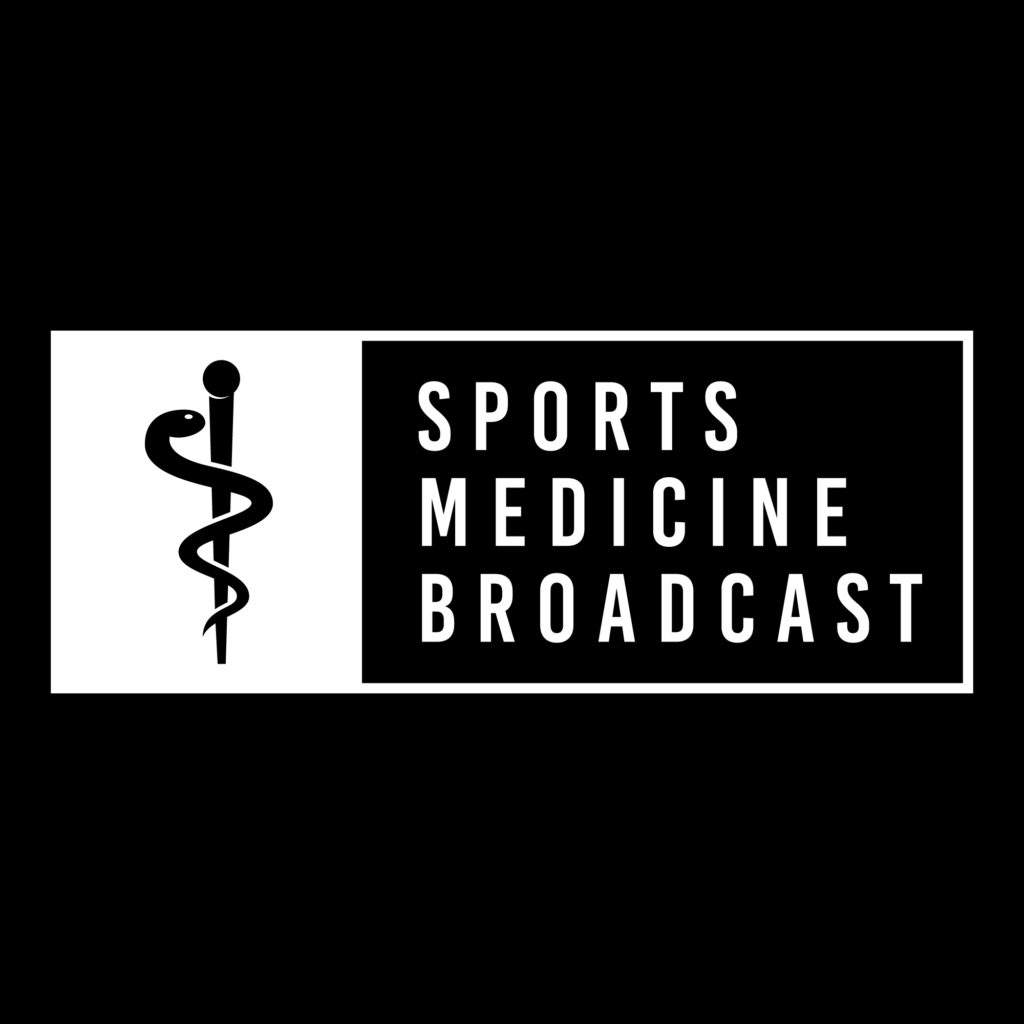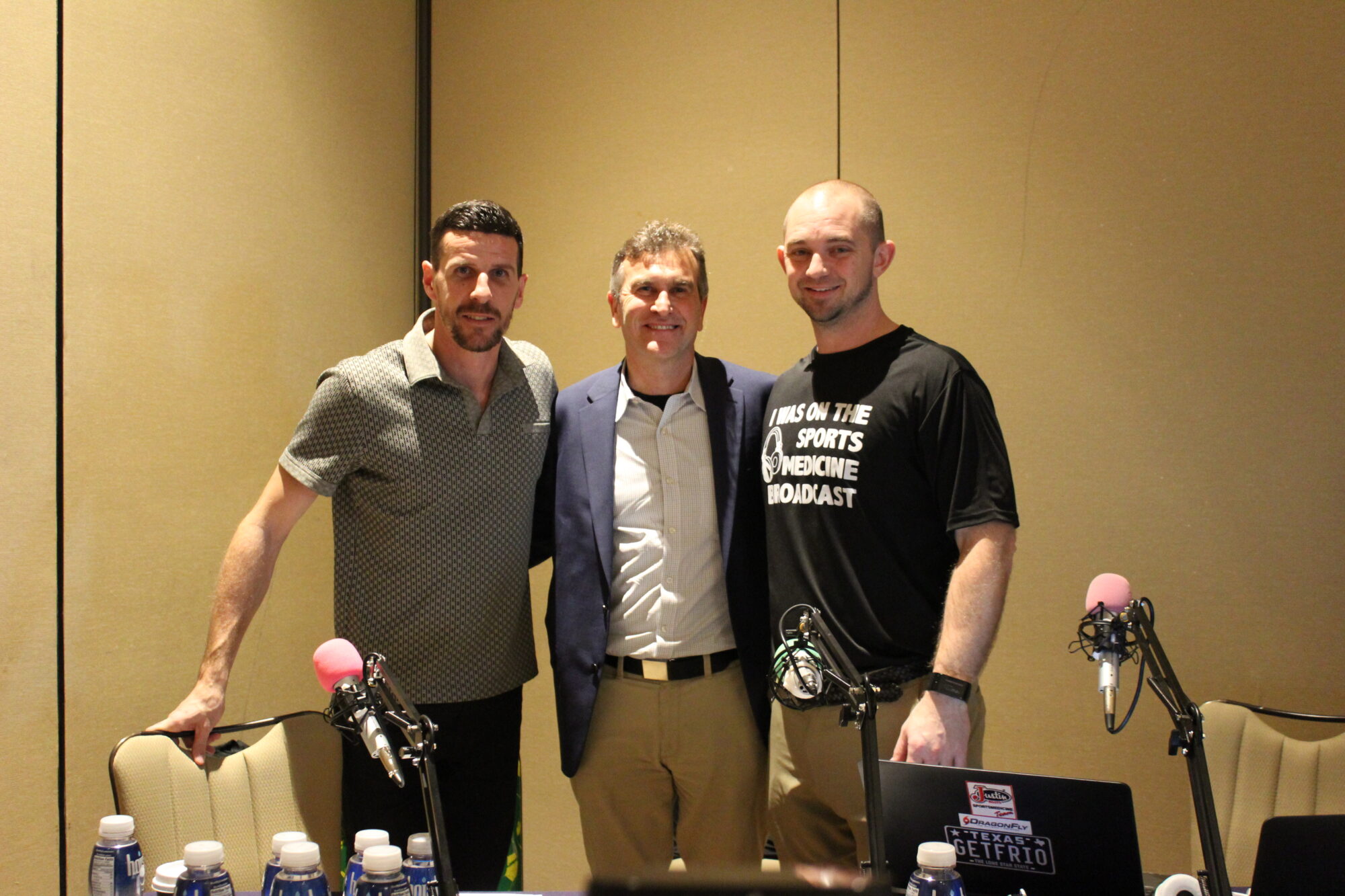Podcast: Play in new window | Download
What does the Athletic Sholder look like in 2019?
Dr. Stephen Simonich, MD joins us today to talk about the athletic shoulder from the Memorial Hermann Sports Medicine Update.

Ever wondered how to explain the rotator cuff as a secondary stabilizer in the GH joint to either your athlete or their family? Dr. Simonich has the perfect analogy.
He tells his patients that it is like if I were to take a big exercise ball in my right arm and pull it into my chest. My chest would be the socket, the exercise ball my humeral head, my arm would be the rotator cuff and my hand the tendons of the cuff. That demonstration can help show how difficult it is for the rotator cuff to stabilize the joint.
What are the two types of shoulder dislocations, where do you see them and how should we treat them?
TUBS (Traumatic Unilateral Bankart Surgical) and AMBRI (atraumatic multidirectional bilateral rehab rarely inferior capsular shift) are the two types of dislocations.
You will see TUBS is most often in contact or collision sports like football or rugby. AMBRI is seen often in swimmers especially at the end of a long season.
Post a TUBS dislocation and relocation Dr. Simonich likes to use the apprehension test as an indicator of further treatment. He also uses athlete age (young athletes have a high rate of recurrence) individual goals, sport played and level of participation as indicators for surgery. Surgery reduces the high rate of recurrence in young athletes.
What are the types of AC joint separation and how do you treat them?
AC joint separations are relatively easy to see and cause biplanar instability. There are 5 types with Type I and II requiring conservative treatment, Type III going either way but trending non-operatively and Type IV V VI requiring reconstruction with a joint tie-down.
Clavicle fracture treatments have changed throughout the years due to research. What does the current research say?
Prior to 06’-07’ most clavicle fractures were treated non operatively. Research was introduced in two studies in those years that saw a better union rate with fixation in the clavicle post-fracture and surgeons began to surgically treat and fixate.
In 2017 a new study showed that while the rate of union is still higher in clavicle fractures with fixation, fixation doesn’t improve shoulder function nor does it decrease limitations in the shoulder. Dr. Simonich will put a plate to fixate the clavicle on an athlete with shortening, displacement, or comminution because they get faster healing rates, are more predictable and can get them back to their sports.
Watch the Athletic Shoulder 2019 presentation on Facebook
Contact Us
Stephen Simonich – (713) 486-9800
Contact Us:
Jeremy Jackson
Shawn Ready – shawnreadyatc@gmail.com
Dr. Mark Knoblauch – maknobla@Central.UH.EDU
Dr. Layci Harrison – lharris5@Central.UH.EDU
Bob Marley – Bob.Marley@uth.tmc.edu
ATCornerPodcast – ATCornerds@gmail.com
Joseph Eberhardt – eberhardtj@pearlandisd.org
Christina Fry – fryc@pearlandisd.org
These people LOVE Athletic Trainers and help support the podcast:
Frio Hydration – Superior Hydration products.
Donate and get some swag (like Patreon but for the school)
HOIST – No matter your reason for dehydration DRINK HOIST
MedBridge Education – Use “TheSMB” to save some, be entered in a drawing for a second year free, and support the podcast.
Marc Pro – Use “THESMB” to recover better.
Sponsors
Frio Hydration – Superior Hydration products.
Donate and get some swag (like Patreon but for the school)
HOIST – No matter your reason for dehydration DRINK HOIST
MedBridge Education – Use “TheSMB” to save some, be entered in a drawing for a second year free, and support the podcast.
Marc Pro – Use “THESMB” to recover better.

Previous episodes discussing the Athletic Shoulder:
